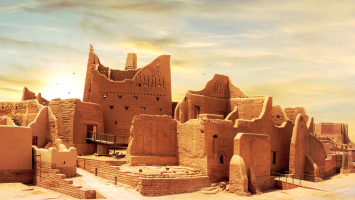Top 8 Most Beautiful Historical Sites in Curaçao
Curaçao may evoke memories of palm-lined beaches and breezy nights spent sipping a delicious cocktail. But let's explore another aspect of this country, which ... read more...is historical sites. And here are the most beautiful historical sites in Curaçao.
-
Willemstad was established by the Dutch as a trading post in the 17th century. Curaçao's trademark landmark, the colorful Dutch colonial houses that line Willemstad's waterfront, are also part of a UNESCO World Heritage site that encompasses the historic districts of Punda, Pietermaai, Otrobanda, and Scharloo. The oldest portion of the city, Punda, was built in the 17th century and is the only place where a defense system of walls and ramparts, which were connected to Fort Amsterdam, can still be seen. The remaining districts, which date from the 18th century, include a wider range of architectural styles, including galleries and characteristic baroque features such as curved gables.
Willemstad's architecture was influenced not just by Dutch colonial ideas, but also by the tropical environment and architectural forms of communities in the Caribbean region with which the city traded. The first houses built in Punda were based on Dutch urban planning. Local materials and craftsmanship, as well as new architectural aspects such as galleries, began to appear in the 18th century. The architectural style of the dwellings evolved as the city extended beyond Punda.
Willemstad is an example of a well-preserved Dutch trading village from the colonial period. The majority of the original 1650-1900 urban structure and architecture is still intact and serves as the backdrop for a great number of monuments. Over three centuries, the multicultural community has had a significant impact on the city's growth.
Location: Willemstad
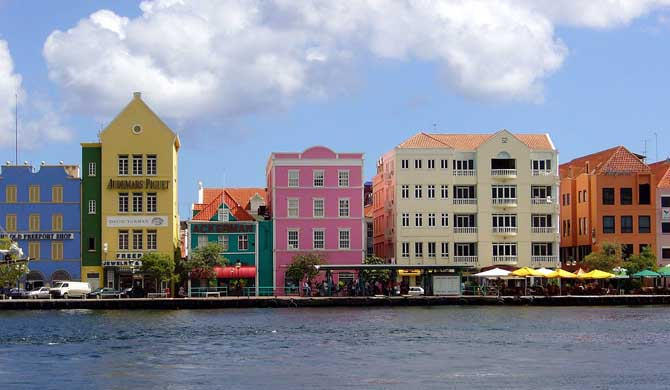
Photo: Hostelman.com 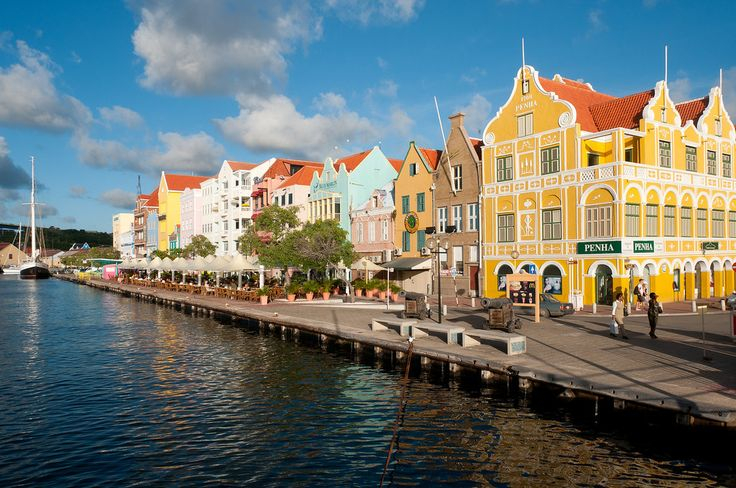
Photo: Pinterest -
Fort Amsterdam is one of the first structures built in the capital city Willemstad and one of the most beautiful historical sites in Curaçao as well. The fort was constructed in 1634 and has been guarding the Curaçao harbor against marauding pirates and other adversaries ever since. It was the main of the eight forts on the island, and it was built by the Dutch West India Company (DWIC). It also functioned as the Company's headquarters.
The classic white and yellow architecture reflects the adaptation of Dutch architectural forms to the Caribbean climate. Some of the fort's walls indicating a long history of European battles in the Caribbean. This is the most important of the island's six forts, and the huge walls that rise above the water's edge are a sight to behold. There are four bastions on the nine-foot-wide walls. The Fort Church, Curaçao's oldest Protestant church, was built in 1769 and is housed within the golden yellow edifice. Artifacts such as silver chalices and a mahogany baptismal font are on exhibit, along with a collection of congregational documents dating back hundreds of years. Fort Amsterdam, a UNESCO World Heritage Site, now serves as the residence of Curaçao's governor and the island's parliament.
Location: Willemstad
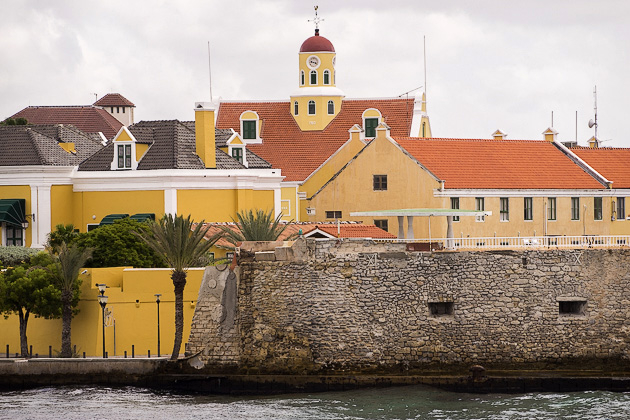
Photo: Curaçao for 91 Days 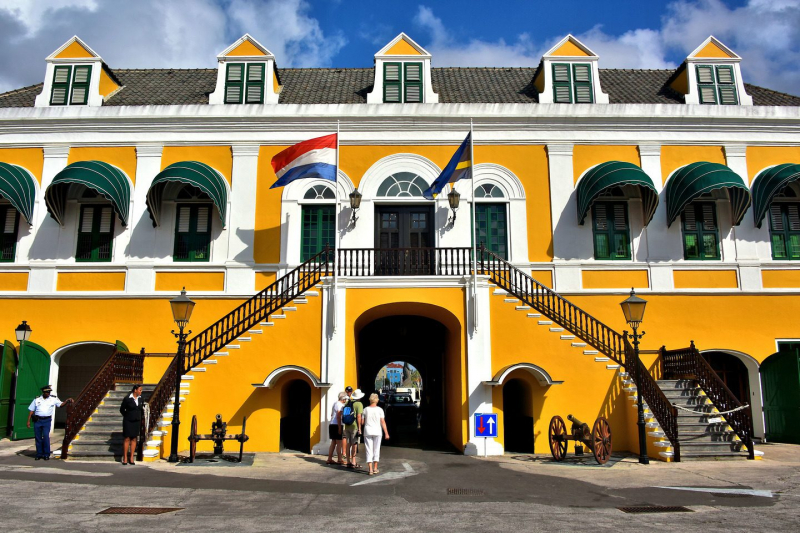
Photo: Encircle Photos -
Landhuis Jan Kok is one of Curaçao's oldest plantation buildings, having been established in 1704 and restored in 1840. The 345-acre plantation was formerly used for salt manufacturing, and the salt flats that are now home to flamingos can still be seen from the terrace. The plantation employed over 100 enslaved workers, and the owner, Jan Kok, was infamously brutal. Locals think his vengeful spirit still lingers in the main home, but acclaimed local artist Nena Sanchez has built a bright art gallery in the country house to ward off the evil spirits. This home offers fascinating insight into the island's history as well as how it has changed in recent times.
As a rural home with a core and galleries typical of Curaçao, Landhuis Jan Kok has architectural and cultural historical significance. The distinctive 18th century magasina, the cistern beneath the terrace, and the storage at the base are also noteworthy. Because of the environment and the coherence of buildings, infrastructure, and saltpans, the ensemble has monumental importance.
On the plantation, livestock was also kept. The central component of the colonial mansion on Curaçao has a saddle roof, and the house is surrounded by various nearby structures. On the southern terrace, the antique slave clock has been kept and is still in use. You may enjoy the wonderful view from the terrace, which looks out over the salt pans of St. Marie Bay. Flamingos, sea eagles, and parakeets are frequently seen flying overhead in this natural region.
Location: Jan Kok
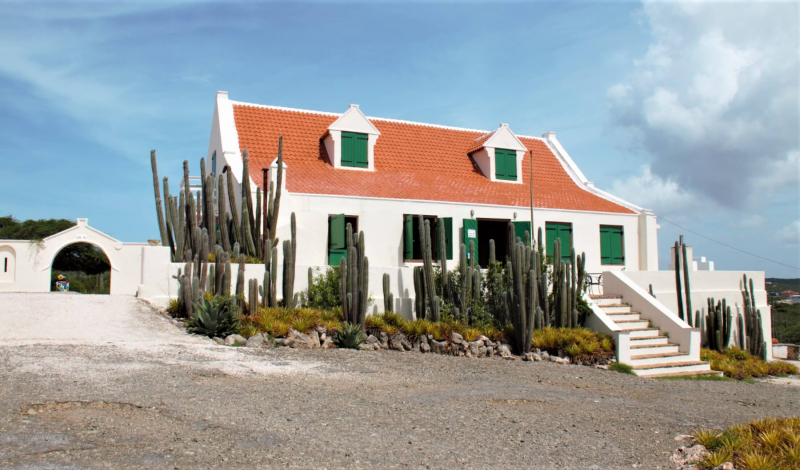
Photo: Curaçao Monuments 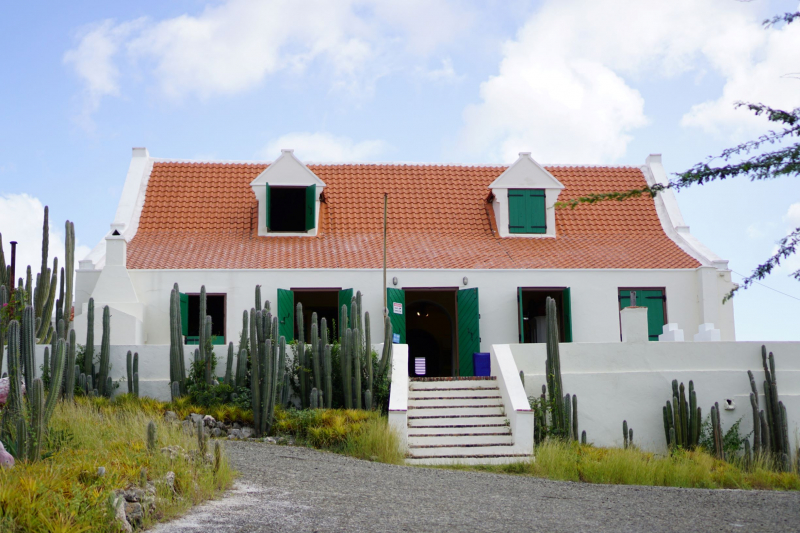
Photo: Bier en Appelsap -
Kura Hulanda Museum is the Caribbean's most extensive museum as well as one of the most beautiful historical sites in Curaçao dedicated to the slave trade and the Middle Passage, as well as the region's greatest anthropological collection on Africa. The museum, which opened in 1999 and is set on a former slave yard and merchant's residence, was founded by Dutch philanthropist Jacob Gelt Dekker. The spine-chilling Middle Passage part begins outside with a reproduction of slave pillars for public whipping and continues indoors with exhibits highlighting Curaçao's role as the slave trade's epicenter, as well as the instruments used to capture, brand, and punish slaves. For an extra $3, master storyteller Yflen Florentina will take you on a tour of the museum while telling you dramatic tales from Curaçao's darkest history.
The Trans-Atlantic Slave Trade is depicted in its entirety at this museum, from slave capture in Africa to the Middle Passage and resettlement in the New World. The museum Kura Hulanda also exhibits how Curaçaoan and Caribbean communities have been affected by African and diverse cultural heritage until today.
Kura Hulanda Museum is divided into two sections: one dedicated to the history of African slavery, which is the focus of the guided tour, and the other housing an excellent collection of African artifacts, allegedly the best in the Caribbean, including masks, fetishes, bronzes, musical instruments, and so on.
Location: Willemstad
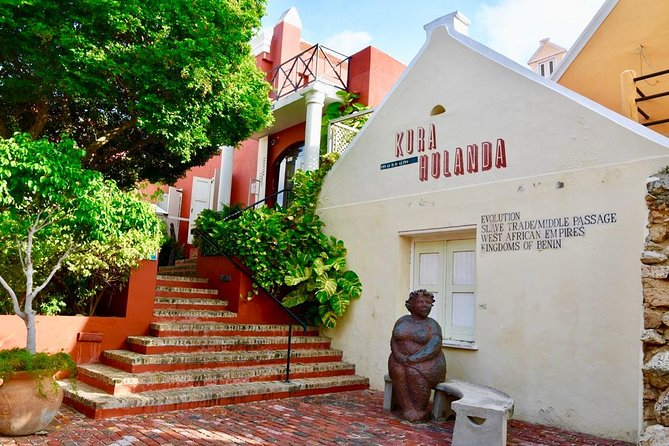
Photo: Viator 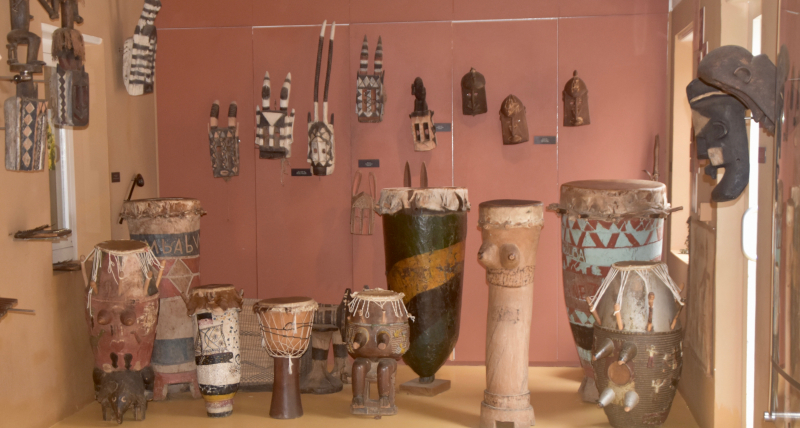
Photo: The Maritime Explorer -
On the Caribbean island of Curaçao in the Dutch Antilles, Fort Beekenburg is located on a rocky outcrop next to the Caracas Bay, east of the city of Willemstad. Fort Beekenburg was built in 1703 on Governor Van Beek's orders to protect the Spaanse Water, the entrance to the bay behind it. The fort's circular tower was entirely constructed out of stones produced in the Netherlands and carried to Curaçao as ballast.
A spherical tower in the shape of a chess piece stands atop the fortress. Rainwater is carried to a reservoir inside the tower via channels on the top of the tower. Consequently, fresh water was always available, even during a siege. On the roof of the tower, there were also cannons. A hexagonal platform with battlements sits at the base of the tower. Cannons were also stationed here to protect the entrance to the Spanish Water. From the ground floor, a stone stairway leads to this platform. At one time, the only way to ascend the tower was to reach a wooden door on top of the tower. This was most likely a ladder that could be retrieved in an emergency. The hexagonal platform can be reached from the tower by descending a flight of stairs into the tower. A short corridor leads to a wooden door that opens onto the platform from there. Three sides of the tower with platforms are walled, and the fourth side is a cliff overlooking the harbor.
Fort Beekenburg, unlike Curaçao's more well-known colonial-era fortresses like Rif Fort and Waterfort, is entirely abandoned. It was inaccessible for many years since it was located on private property owned by an oil corporation. Today, however, it is open to the public at all times and is free of charge.
Location: Caracas Bay
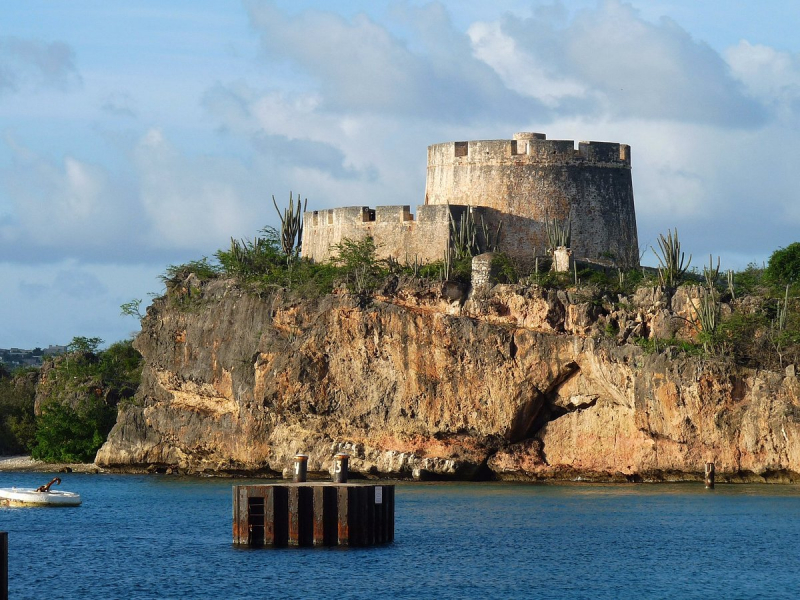
Photo: TripAdvisor 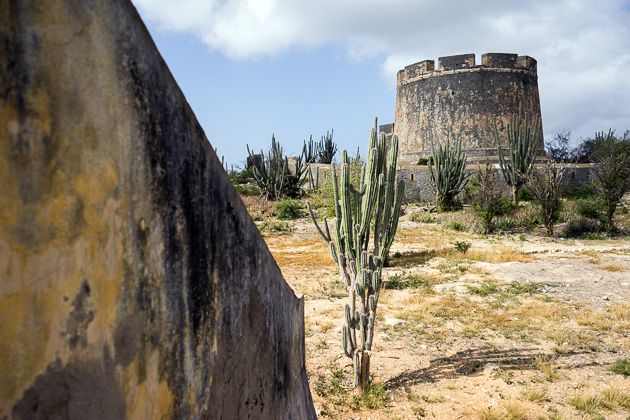
Photo: Curaçao for 91 Days -
Landhuis Bloemhof is a plantation home, art gallery, and museum located in Willemstad. Landhuis Bloemhof began as a tiny plantation around 1735. It was mostly a water plantation where drinking water was sold. There are water wells, dams, an aqueduct, and various reservoirs on the property. The plantation produced laraha, a bitter orange, until 1896.
May Henriquez's Landhuis Bloemhof is a cultural institution devoted to her memory. This historic mansion welcomes contemporary visual artists to exhibit their work. There's plenty more to see and do on the estate's seventeen acres, including May Henriquez's frozen-in-time sculpture workshop, the Ex Libris May-Max Library, and our gift shop, which features colorful souvenirs, handcrafted jewelry, and art books, to name a few.
On the property, in the gardens, there is also a bath house tucked between shady trees, Herman van Bergen's Labyrinth/Cathedral of Thorns, and Hortence Brown's open air sculpture workshop. Enjoy a cultural experience surrounded by history, modern art, and nature as you stroll through the park. In the midst of the rush and bustle of our metropolitan surroundings, the tropical Curaçao bush, or mondi as we call it, is a unique surprise. Don't miss this one of the most beautiful historical sites in Curaçao when you come here!
Location: Willemstad
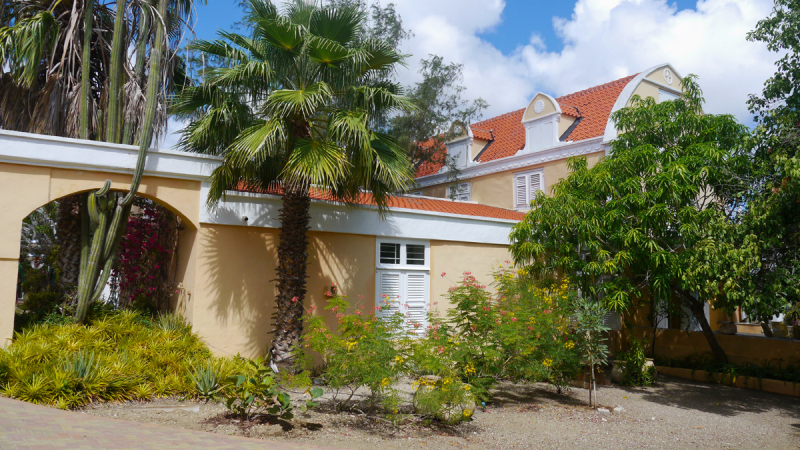
Photo: Landhuis Bloemhof 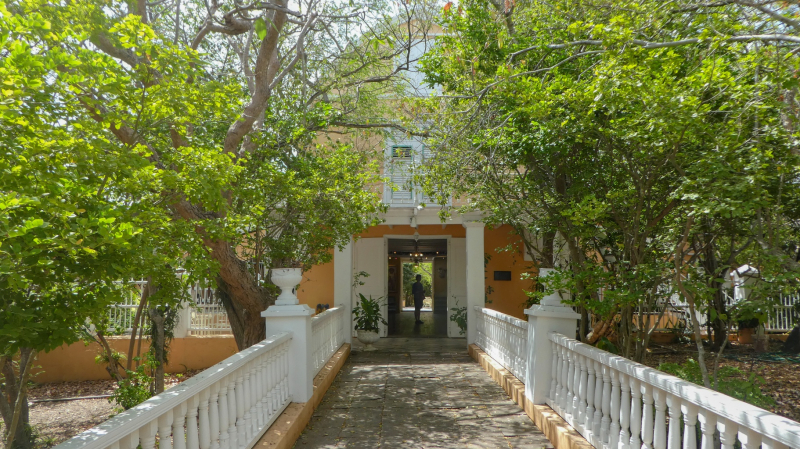
Photo: TripBucket -
Curaçao's Queen Emma Bridge is a pontoon bridge that spans St. Anna Bay. It connects the Punda and Otrobanda quarters of Willemstad, the capital city. The bridge is hinged and opens on a regular basis to allow oceangoing vessels to pass through. A small shelter is located on the opposite end of the hinge, where an operator controls two diesel engines that power propellers. The propellers are perpendicular to the bridge's length, allowing it to swing parallel to the coast. It simply takes a few minutes to complete the process. Built in 1888, the bridge has been entirely restored four times: in 1939, 1961, 1983-1986, and 2005-2006. The lighting arches were installed in 1955 to commemorate Queen Juliana's and Prince Bernhard's royal visit.
The bridge, which is known as the "Swinging Old Lady," is supported by 16 wooden pontoon boats and two engines. This floating pedestrian bridge joins the Punda and Otrobanda neighborhoods and is named after Dutch Queen Emma. A siren sounds every half hour, signaling that the bridge is going to swing open, allowing boats to pass over. Queen Emma is one of the world's oldest wooden pontoon bridges.
The bridge has been an important link in Curaçao's capital throughout its history, and pedestrians who wanted to cross it had to pay 2 cents from 1901 and 1934, unless they were going barefoot, in which case the crossing was free. In 1974, all motorized traffic was stopped.
Location: Willemstad
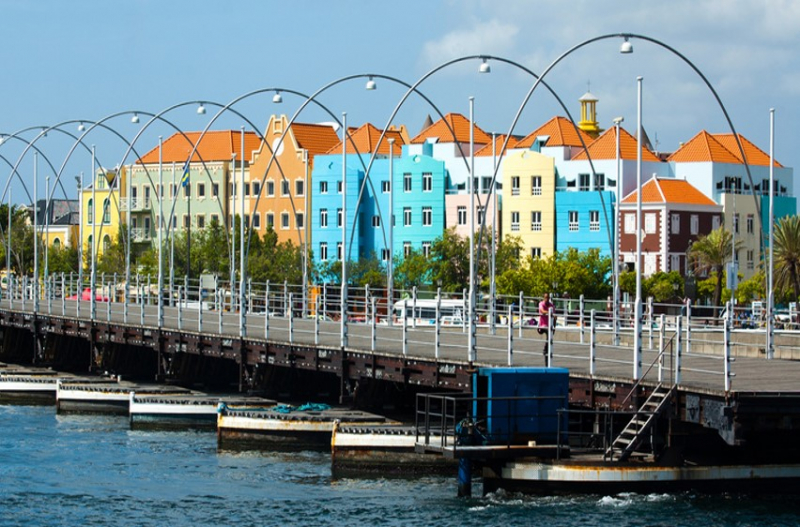
Photo: Curacao To Go Travelguide 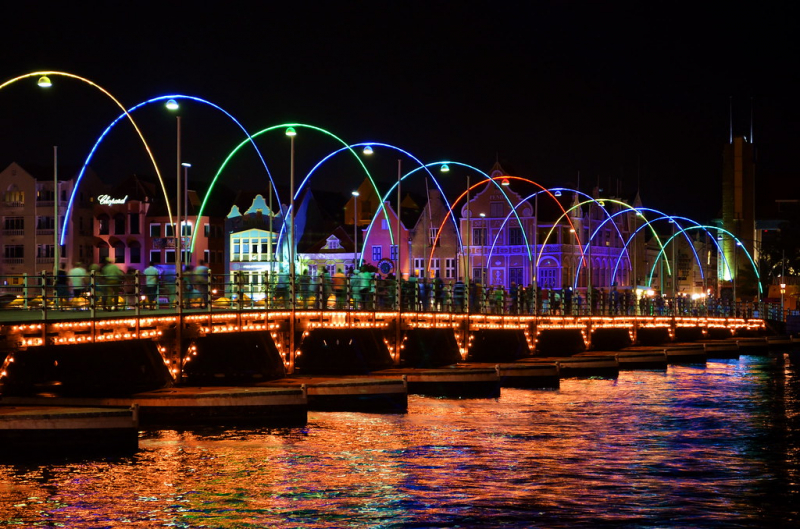
Photo: Caribbean Blog -
The Kenepatree's fruits inspired the name of the Landhuis Knip. The country house was built at the turn of the 18th century. It was originally one of the island's most lucrative plantations. It is also known as one of the most beautiful historical sites in Curaçao. Divi-divi seed-pots and sheep wool were among the products. The colonial house is a significant historical landmark in Curaçao. It was here, on August 17, 1795, when a group of slaves led by Tula refused to labor on the plantation. The rebellious slaves arrived in Santa Cruz, where they were met by a police unit dispatched to assist them.
The country house, which is set on a hill and has all the characteristics of a Curaçao country house, dates from 1830. It's a big home with a wide covered gallery that's totally circular. The saddleback roof is encircled by two sleek, capped gables on the eastern facade, which bear the dates 1830, 1939, and 1985. The house is built in the shape of a rectangle, and the wide galleries on the enormous terraces are designed to keep it cool. It presently houses a museum and a collection of antique furniture. The land house appears to be watching over the two lovely beaches of Kleine Knip and Grote Knip.
The Landhuis Knip today houses a museum dedicated to the revolt and the life of the brave slaves who took part. Modern audio-visual concepts are used to see the exhibits. You can tour the museum on your own or with a group guide.
Location: Lagun
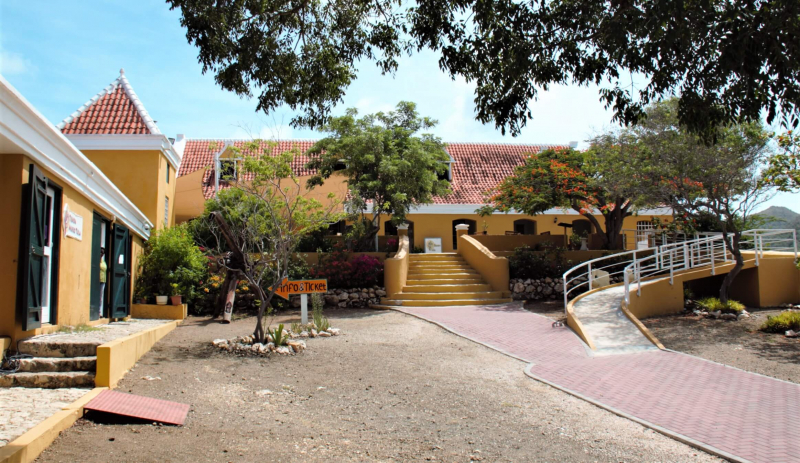
Photo: Curaçao Monuments Source: IrisVideo




























